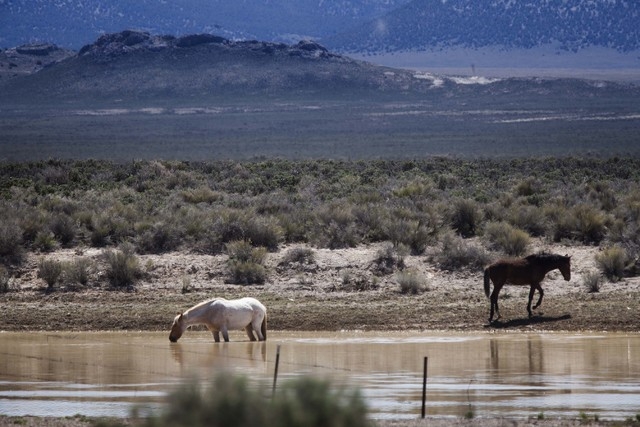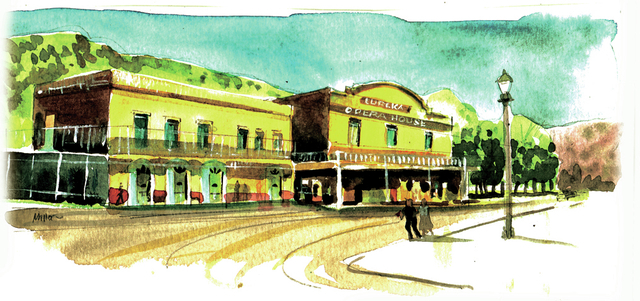Explore Nevada’s past in lovely old Eureka




A lady with a past, Eureka strives to protect her heritage.
As a result, the old mining queen is one of the best preserved of Nevada’s vintage boomtowns. It’s a good place to explore the state’s colorful past and a nice town to visit.
Though much diminished from its heyday, Eureka is not a ghost town. As the county seat, it is a hub to Eureka County’s 2,000 far-flung residents.
Located along U.S. Highway 50 in Nevada’s midsection, Eureka lies between Ely and Austin about 320 miles from Las Vegas by the shortest route. Take Interstate 15 north to the U.S. Highway 93 junction. Follow U.S. 93 through Alamo to the state Route 318 junction near Hiko. Follow this cutoff through Lund to U.S. Highway 6 and turn right to reach Ely. There, turn onto U.S. Highway 50, often called the Loneliest Road in America. Eureka is 77 miles northwest of Ely.
Eureka grew from the 1864 discovery of ore deposits containing a rich mixture of lead, silver, gold, iron and other minerals. A town of tents and hastily erected wooden buildings housed a rapidly growing population lured by the prospering mines, smelters and related industries. Soon Eureka had banks, stores, restaurants, hotels, newspapers, churches, a narrow-gauge railroad, at least 100 saloons, gambling halls, opium dens and a red-light district. By the 1870s, it was Nevada’s second-largest city with more than 10,000 people.
Because of toxic smoke from the 16 smelters operating in the vicinity, Eureka became known as the “Pittsburgh of the West.” Woodcutters denuded the hills for 50 miles around Eureka to stoke the charcoal kilns that produced fuel for the insatiable smelters. It has taken more than a century for forest to cloak the neighboring hills again.
Like many mining towns, Eureka suffered frequent fires. Blazes in 1879 and 1880 destroyed much of Eureka, leaving just a few stone or brick structures standing. The town rebuilt using more fire-resistant materials, including slate or tile on roofs and heavy metal shutters and doors.
Eureka’s mining heyday ended when the easily accessible ores played out in the 1890s, but mining is strong again in Eureka County, which boasts some of the largest gold mines in the world.
As the county seat, Eureka benefits from mining. Its handsome, two-story county courthouse, built of brick after one of the town’s fires, still handles the county’s business. It is one of two 19th-century courthouses in Nevada that are still operating (the other is in Virginia City). Visitors are welcome to admire the vintage charm of the courthouse with its original woodwork, furnishings, fixtures and ceilings.
The courthouse is among dozens of buildings from Eureka’s early days that have been restored or repurposed and are still in use. Near the courthouse sits the fine old Eureka Opera House, which opened in 1880. Renovated and refurbished as a historical building, the opera house remains active as a center for meetings, social activities and performances.
The 1879 Eureka Sentinel building, home of a long-running newspaper, is now a historical museum. The lower floor features mining artifacts and original newspaper equipment. Upstairs, visitors learn about life in the early days for families, schoolchildren, storekeepers, firefighters and other residents.
A self-guided tour of historic places explores nearly 50 sites in and around Eureka. The guide is available in Eureka or at rainesmarket.com.
Margo Bartlett Pesek’s column appears on Sundays.












